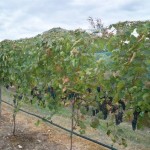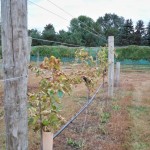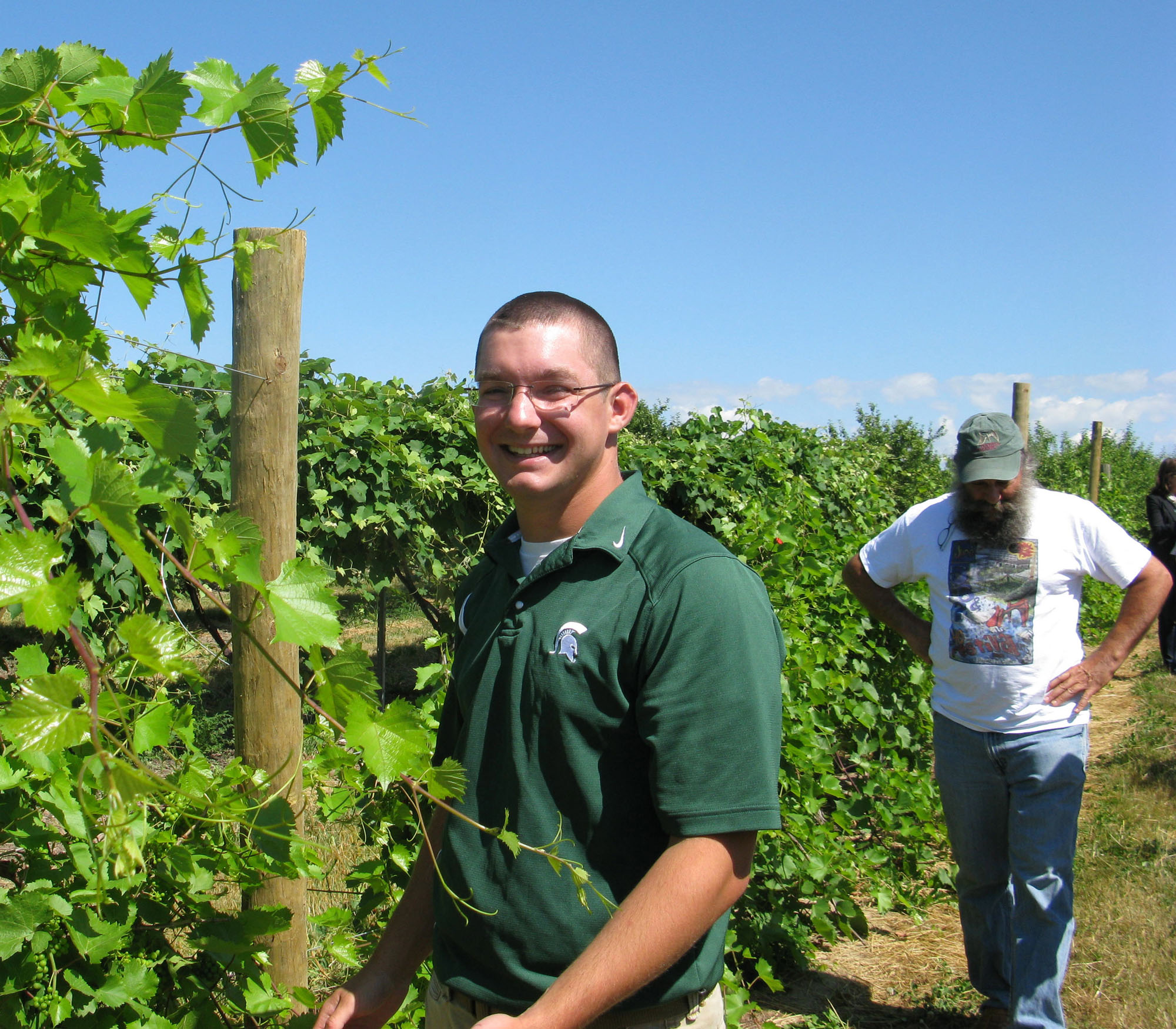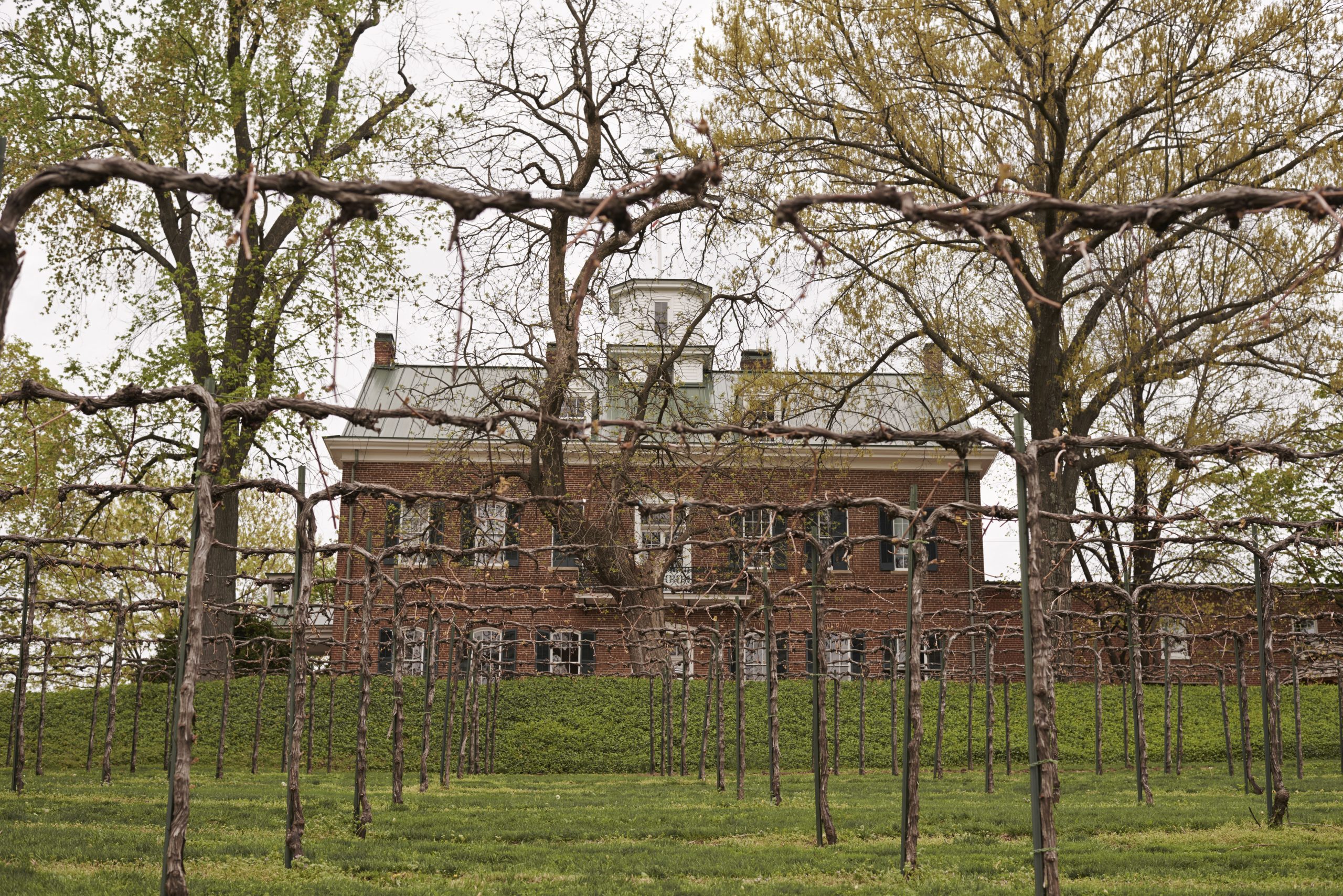John Marshall: Frost Damage Protection for the Small Grower
Here in Minnesota and across much of the Upper Midwest we have had two dramatic frost damage events in the past year and a half. One on Mother’s Day Weekend in Spring 2010 and one this past September 15, 2011. Some growers escaped. Others did not but this has demonstrated clearly how serious these events can be and has made us look toward ways to reduce or escape the damaging effects of late spring and early fall frosts.
Late spring frost can freeze off the emerging shoots from fruiting buds left after pruning and thus can reduce and even eliminate the crop for the coming growing season. Some new growers may fear their young vines have been killed by an event like this, but in fact, each bud site has a secondary bud which emerges when the primary is killed and takes over growth. While it will keep the vine alive and able to carry on, generally secondaries contain fewer fruit clusters and thus give the grower a much smaller crop. There is even a third ‘Tertiary Bud” at each site which will emerge if there were to be a second frost event. Tertiary Buds are largely unfruitful and will maintain the structure of the vine but offer little to no crop.
Fall frost, on the other hand, can occur while the crop is still not ripe damaging and often destroying the leaf canopy. This can bring ripening to a halt requiring that the fruit be harvested early, before it is fully ripe. It can even reduce the vine’s ability to harden off or lignify wood in preparation for winter. Thus either event, spring or fall, can be costly and enormously damaging to the vineyard, both for the current season and seasons to come.
Large growers of many fruits face these problems annually. Spraying the vines with water using overhead irrigation is one well known way to avert damage to blossoms in the event of spring frost. When an irrigation system is turned on and frost occurs it will blanket strawberries, grapes, citris, peaches with ice. While it looks like a disaster in morning, a crop covered with ice, when it melts, miraculously the blossoms are saved, as is the crop. However, few small-scale Minnesota or Midwestern growers can justify the investment it requires to install overhead irrigation that this technique requires.
- Vines treated with KDL for frost protection
- Adjacent vines not treated with KDL
Another useful technique that is often used is the installation of windmachines on high towers that can be turned on to mix the warmer air aloft with the cold air that has settled upon the crop at ground level. Another technique designed to mix or displace cold air at ground level is to hire helicopters to pass over and hover over vineyards. The down blast from the blades is effective in displacing cold air with warmer air aloft and saving endangered blossoms. Again these techniques require large investments and few small growers can justify the costs involved.
To continue reading this post, you must either subscribe or login.[login_form][show_to accesslevel=”annual-membership” ]
These events underscore how important it is to select a vineyard site that is elevated on a hill top or hill side and not in a low place where cold air can settle. George Ibach of Elmwood, Wisconsin for example, has planted in a large open valley but has planted as far up the valley sides as possible. In the recent fall frost he found that his lowest vines did suffer some injury but the bulk of the vines, higher up the valley sides, were unharmed. Two sites on the Minnesota side of the Mississippi located at the bottom of very picturesque but vulnerable coulees have been devastated in such events. Such sites are to be avoided.
However, in many cases dramatic frost events occur which will endanger all of us. Fortunately some local growers have been very resourceful in finding techniques to combat frost injury. One of the most interesting and least costly was that of Rudy Jungwirth of Valley Vineyards near Prescott, Wisconsin. When he realized the spring Frost of Mother’s Day was going to endanger his vines he took his air blast sprayer out at 2 AM. He reports that the temperature had already dropped well into the 20s. He drove his tractor down to the lower end of a ravine where his vines were planted along both sides and allowed it to run pointed down toward the lower end of the ravine. The sprayer drew air from the back of the tractor, off the hillsides and blasted it high into the night sky.
His plan was to use the air blast to mix warm air aloft with the cold air at ground level and raise the temperature a bit hopefully enough to stay above critical or damaging levels. He was amazed to see that this techniqe raised the temperature in his vineyard 9 degrees in just 15 minutes. He noted the temperature dropping again about two hours later and repeated the process, again with very successful results. Rudy feels that if he had responded to the dropping temperatures earlier in the night he may well have escaped damage from the spring frost event altogether. Even so he escaped most of the damage that would have occurred there and did occur at many sites around his area.
See related story: Viticulture Advice for Warmest March Ever
Bob Howe, Field Rep. for Crop Production Services in Galesville, Wisconsin manages an orchard in the Galesville Area. He reports that a number of area apple growers there use their air blast sprayers to circulate air during a freeze event driving up and down rows during the night. Bob reports that, although it is not 100% effective, growers indicate this simple procedure has proven effective many times. Bob cautions that we should not run our sprayers dry but keep some water inside as running the machine dry is very hard on the spray pump. Low cost though it might be, Bob adds that the FMC 50 Gallon Model, that many vineyards use, moves 2000 cubic feet of air/minute and is more effective than one might imagine.
Kim and Tami Bredeson of Carlos Creek Winery at Alexandria, Minnesota took it a step further. When they realized their vines were in danger from the recent September frost, Kim took his air blast sprayer out and filled it with water. Upon entering the vineyard he could see that a thin white frost was forming on the canopy. While this is often seen and sometimes does not cause damage Kim was aware the night might get much colder.
At 3:00 AM Kim reports that the temperature had dropped to 30°F. The water he sprayed onto the vines as a fine mist melted the frost. While it did not seem to raise the temperature one could feel the humidity hang in the air on this windless night. At 4:30 AM he sprayed again and at 7 AM sprayed a third time when the temperature had dropped to 26°F. The blocks of King of the North and Valiant vines he treated emerged next day unscathed except for a few damaged leaves around the perimeter of the block. The canopies on untreated vines, that had either been picked or were considered less critical, were badly damaged. The leaves on the treated blocks remained in good condition at least until Oct. 20th or so. Again, this is a very low cost and in fact very effective technique to combat frost.
However, perhaps just as significant in this example is the fact that applying water was a very effective element in saving the crop and the canopy thereon. Thus, while the air blast is proven to be important in moving air and displacing cold air with warm, any grower, even with a hydraulic, non-fan driven sprayer, could apply water, thereby providing important, possibly critical, protection even without the air displacement an air blast sprayer might offer.
Taking frost protection a step further, Larry Shafer of the Agro-K Corporation, a foliar fertilization company in Minneapolis relates that considerable grower experience has shown that KDL, one of their fertilizers (Potassium, Dextrose, Lactose) seems to impart resistance to plants subjected to damaging freeze events. Larry reports that, in Michigan, strawberry growers often flood or spray with overhead irrigation to form ice barriers to combat frost. However, those without enough water or irrigation facilities use KDL directly on their fields with good results. In fact, here in Minnesota, Larry reports that several vineyards have used KDL on their vines successfully. He recommends using one Gallon/acre about 24 hours before the expected freeze event.
Don Dinesen of Cannon Falls, Minnesota has used this technique on some of his 3000 vines. During the Fall frost of this past September 15, he reports that he used the Agro-K program about 12 -15 hours beforehand. He is pleased to report that not only was his vineyard canopy in tact after the event but he noted that grass around the vineyard, that had picked up incidental spray survived the event green and viable as well, whereas grass was ‘crunchy” and later turned brown only a few feet away. In fact, he has an adjacent block of vines that he left unsprayed that emerged from the event without a viable leaf in the entire block.
Perhaps even more amazing, a neighbor of Dinesen borrowed some KDL from Don at 5 PM the afternoon of the event. She applied it that evening and even with this brief lead time saw dramatic survival of her leaf canopy despite temperatures that froze nearly everything else in her vicinity.
Finally, Larry Shafer brings up an interesting dynamic of frost protection that needs consideration. In a spring frost event there is usually virtually no leaf canopy and the ground is still quite cold. Thus, displacing cold air would be of great value in spring. However, in fall, when the soil may still be quitewarm and a fully developed leaf canopy can hold heat near the ground blowing this air out may be of less value in Fall than in spring.
All these factors taken together definitely offers the small grower hope. KDL appears to be of important value acting as an ‘anti-freeze” on grapes and many living plant materials. However, Shafer feels there is not more than 5-7 degrees of protection in this method. Therefore, if you note that temperatures are likely to fall below this threshold of protection, Sprayers can drain away or recirculate cold air upward allowing warm air to drop into the vineyard site. Taken together, a combination of spray techniques and recirculating air may well offer excellent freeze protection to small growers using materials and machines they already have at a cost they can afford.
Editor’s Note: Thanks to Tami and Kim Bredeson of Carlos Creek Winery, Alexandria, MN; Rudy Jungwirth of Valley Vineyards, Prescott, WI; Larry Shafer of the Agro-K Corporation, Mpls., MN; Bob Howe of Crop Production Services, Galesville, WI, Don Dinesen, Cannon Falls, MN; and George Ibach, Black Squirrel Vineyard, Elmwood, WI. All provided valuable information in the development of this article.
This story was reprinted by permission of the Minnesota Grape Growers Association (MGGA) and first appeared in the Winter issue of MGGA’s “Notes from the North.” Midwest Wine Press is proud to be a member of the MGGA. Please visit their website at mngrapegrowers.com
[/show_to][password-recovery-link text=’Lost Password? Click here for password recovery.’]
[wp_geo_map]







1 Response
[…] http://midwestwinepress.com/2012/01/19/frost-damage-protection-grape-grower/ […]